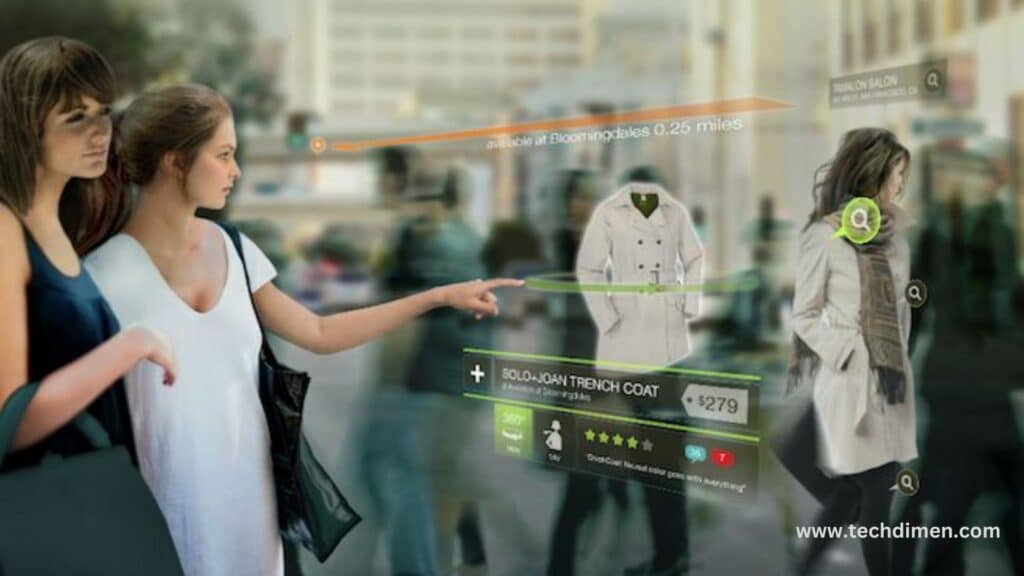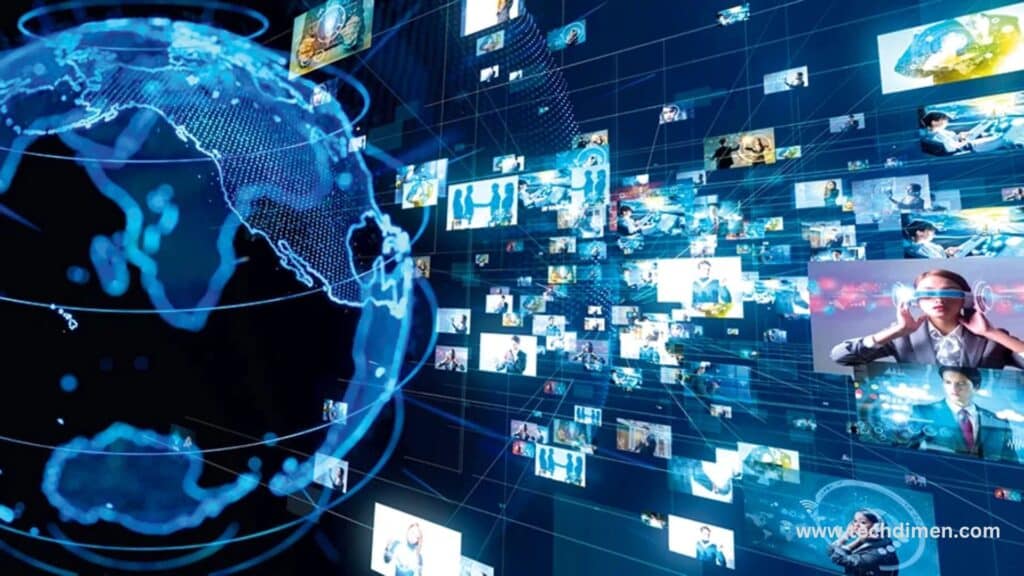Technology and advertising are no longer separate worlds they are one. From personalized product recommendations to AI generated campaigns, the future of advertising is driven by advanced marketing technology, big data, and real-time automation. Brands, marketers, and agencies that adapt to this digital transformation in marketing are reaping the rewards through better ROI, higher click through rates (CTR), and more personalized customer experiences.
This guide explores how technology is reshaping advertising, the rise of AdTech, and the latest marketing technology trends that are making advertising smarter, faster, and more effective than ever before.
The Evolution of Advertising: How Technology Reshaped the Landscape
Advertising has undergone a radical transformation in the past century. The industry shifted from newspaper classifieds and radio jingles to AI driven digital campaigns and personalized content strategies. In the 1920s, marketing was limited to static media like print and radio. By the 1970s, television and outdoor advertising became dominant. The internet revolution of the 2000s introduced websites and search ads, and in the 2010s, social media emerged as a powerful new channel. Now, in the 2020s, omnichannel digital experiences supported by technologies like AI, AR, and machine learning dominate the landscape.
| Era | Dominant Medium | Key Technologies |
|---|---|---|
| 1920s 1960s | Print, Radio | Offset printing, Broadcast |
| 1970s 1990s | TV, Billboards | Cable TV, Nielsen Ratings |
| 2000s | Websites, Search Ads | Google Ads, Email Marketing |
| 2010s | Social Media | Facebook Ads, Mobile Targeting |
| 2020s | Omnichannel Digital | AI, Machine Learning, AR/VR |
Traditional advertising focused on reaching mass audiences with limited targeting. It lacked precision and offered minimal ways to measure performance. Today, digital and tech driven advertising offers hyper-personalized targeting, this time performance measurement, and scalable cost structures. The shift to data driven advertising has changed how brands engage with consumers.
Core Technology Trends That Are Reshaping Advertising

AI in advertising is redefining every step of the marketing journey. From using predictive analytics to anticipate customer needs to natural language processing that generates persuasive ad copy, AI is now central to campaign planning and execution. Major brands like Coca Cola leverage AI to analyze social media conversations and adjust campaigns on the fly, which has led to a 30% increase in return on ad spend (ROAS) in certain markets.
Big data is another pillar of modern advertising. It helps marketers go beyond basic demographics to understand behavior patterns, intent, and preferences. Using data from CRM systems, customer data platforms (CDPs), and real-time analytics tools, marketers can implement predictive targeting strategies that drive stronger conversion rates.
Augmented reality (AR) and virtual reality (VR) are enhancing user engagement. Tools like IKEA’s Place App allow customers to visualize furniture in their homes before purchasing, increasing confidence and reducing returns. Snapchat AR lenses are being used to simulate product usage, especially in fashion and cosmetics.
Voice interfaces are reshaping how content is discovered. With over 8.4 billion voice enabled devices in circulation globally, optimizing ads for voice search and deploying campaigns through smart speakers and connected devices has become essential. Platforms like Spotify Ads Studio offer marketers the tools to create immersive audio experiences.
Generative AI tools are also driving creative production. Applications like Sora and Runway make it possible to create compelling video ads within hours. These innovations reduce production costs and time while enabling rapid experimentation with different ad formats.
What Is AdTech? A 2025 Look at Advertising’s Digital Backbone
Advertising technology, or AdTech, refers to the software and platforms that help marketers deliver, manage, and analyze their campaigns. A typical AdTech stack includes a range of tools, each with a specific role in the advertising process.
| Component | Function | Example Tools |
| DSP (Demand Side) | Buy ad inventory | Google DV360, The Trade Desk |
| SSP (Supply-Side) | Sell inventory | Magnite, PubMatic |
| DMP/CDP | Manage audience data | Segment, Tealium |
| Ad Server | Deliver creative | Google Ad Manager |
| Analytics Platform | Measure performance | Google Analytics 4 |
this time bidding (RTB) has become the backbone of digital ad buying. It allows advertisers to bid on individual ad impressions in milliseconds through demand side platforms (DSPs). On the other side, supply side platforms (SSPs) help publishers make their inventory available in real time.
As third party cookies are phased out, AdTech is evolving toward solutions like Unified ID 2.0 and Google’s Privacy Sandbox. The emphasis is now on contextual targeting and privacy-first strategies that rely heavily on first party data and identity resolution frameworks.
How Automation Is Dominating Digital Advertising

Programmatic advertising now accounts for more than 89% of digital ad transactions. It automates decisions about media buying and creative delivery. Platforms such as The Trade Desk and MediaMath offer sophisticated tools that determine which ads to show, when, and to whom all in real time.
Automation extends into the creative process as well. Dynamic creative optimization (DCO) tools test different headlines, visuals, and calls to action (CTAs) to identify the highest-performing combinations. This method increases engagement, improves CTR, and reduces the cost per acquisition (CPA).
Despite these advances, automation also introduces risks. Ad fraud, responsible for over $68 billion in global losses annually, remains a major concern. Automated platforms may inadvertently introduce bias, leading to exclusion or discrimination in ad delivery. Tools like HUMAN and DoubleVerify help mitigate fraud, while ethical review processes ensure fairness and brand safety.
Personalization, Privacy, and the Push for Ethical AdTech
AI-powered personalization allows marketers to deliver experiences tailored to individual preferences. Whether it’s customizing an email subject line or showing product recommendations based on browsing history, hyper-personalization increases engagement and conversion rates.
However, with great power comes great responsibility. Regulations like GDPR in Europe, CCPA in California, and new laws across the Asia-Pacific region are imposing strict rules on data collection, storage, and usage. In 2025, the Global Data Rights Framework (GDRF) is emerging as a unifying structure for global compliance.
Ethical targeting is now a strategic priority. Advertisers are using explainable AI (XAI) to understand how algorithms make decisions. Consent management platforms (CMPs) are also standard, ensuring that users maintain control over their data and choices.
The Future of Technology and Advertising

The future of advertising is increasingly immersive, transparent, and driven by artificial intelligence. AI generated influencers and avatars are creating branded content. Voice AI is being integrated into customer service ads, and generative video ads are being edited in real time based on viewer data.
Blockchain is emerging as a solution to longstanding issues of transparency and trust. By enabling verified impressions and secure media transactions, blockchain adds a layer of accountability. Unilever’s use of blockchain to audit media spend across global partners is a pioneering example.
Consumer behavior is also changing. The preference for short-form videos, often under 15 seconds, is growing rapidly. People now use multiple screens simultaneously watching TV while browsing on mobile or shopping via tablets. This has led to the rise of ambient content: ads that play automatically in silence or adapt to the viewer’s attention span.
With cookies fading out, marketers are adopting consent first design strategies. These include more transparent cookie banners, user-friendly opt-in interfaces, and formats where users willingly engage with ads in exchange for benefits such as discounts or premium access.
FAQs on Technology and Advertising in 2025
What is the main role of technology in advertising today?
Technology enables smarter, more efficient advertising through automation, personalization, data analytics, and real-time delivery. It helps marketers reach the right people with the right message at the right time.
How does programmatic advertising work?
Programmatic advertising uses software and AI to buy and place ads in this time auctions. Advertisers use DSPs to bid on impressions, while publishers use SSPs to sell inventory.
What is AdTech and why is it important?
AdTech refers to the digital tools that facilitate automated, data driven advertising. It includes platforms like DSPs, SSPs, CDPs, and analytics systems, which collectively improve targeting, performance, and cost-efficiency.
Is privacy a major concern in digital advertising?
Yes. With stricter regulations like GDPR and CCPA, advertisers must prioritize consent and data transparency. Ethical use of data is now essential for maintaining consumer trust.
What are some future trends in advertising and technology?
Emerging trends include blockchain for ad transparency, AI generated content, immersive AR/VR ads, and the rise of ambient, short form content tailored to multi screen behavior.
Final Thoughts
In 2025, technology and advertising are fully intertwined. Brands that embrace AI in advertising, leverage AdTech, and invest in data driven advertising will outperform their competitors.
With tools like programmatic advertising, AI generated content, and cross-platform targeting, the future of advertising is both exciting and complex. Staying ahead requires continuous learning, adaptation, and a strong ethical compass.

Jhon AJS is a tech enthusiast and author at Tech Dimen, where he explores the latest trends in technology and TV dimensions. With a passion for simplifying complex topics, Jhon aims to make tech accessible and engaging for readers of all levels.







